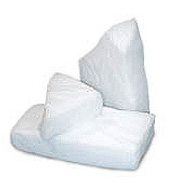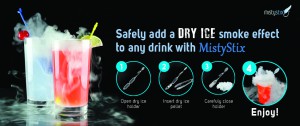 Dry Ice Solid
Dry Ice Solid
50 lb. Block of Dry Ice measures approximately 10″ x 10″ x 10″
Available in sliced or pellet format, dry ice is available in custom sizes and packaged to customer specifications.
 Dry Ice Sliced
Dry Ice Sliced
Dry ice is available in increments of 5lb + 50lb, and used primarily in frozen food applications.
 Dry Ice Pellets
Dry Ice Pellets
Standard Dry ice pellet size, approximately 1/2″ diameter dry ice pellets. Commonly used for transportation of blood samples and lab specimens
 High Density Dry Ice Pellets
High Density Dry Ice Pellets
1/8″ diameter dry ice pellets. For use in dry ice blast cleaning systems.
*Must be ordered 24 hours in advance
 Shipping Containers
Shipping Containers
Each container consists of a corrugated exterior with a foam insert. Insulated shipping containers are available in 3 sizes.
- Small 10.5″ x 8″ x 9.25″
- Medium 14.125″ x 10.25″ x 9.5″
- Large 17″ x 12.5″ x 14.5″
Shipping Materials
Gel Packs, Boxes, Tape, labels etc. *
Mistystix are dryice swizzle sticks that create a misty fog effect. Delight your guests with a fun viusal experience by loading Mistystix capsules
with dryice. Enjoyed by all ages, Mistystix are great for drinks served in restaurants, hotels, resorts, caterers, bars and nightclubs. A sure way to put a smile
on a face, Mistystix are the last touch that will increase the allure of the drinks you serve.
How to calculate Dry Ice for misty Stix:
- For every 10 stix you will need at least 1lb of dry ice
- example 300sticks order/10 =30lbs of dry ice.
Handling
NEVER leave dry ice unattended around children!
Do not allow dry ice to touch bare skin.
Always wear protective gloves whenever handling dry ice.
Storage instructions:
Dry Ice will sublimate into carbon dioxide (CO2) gas. Store dry ice in an insulated container – the better the insulation, the slower the dry ice sublimation. Do not store dry ice in a refrigerator or a freezer (unless the dry ice is being used to maintain the proper temperature).
Do not store dry ice in an airtight container; never store in a glass container. The sublimation of dry ice into carbon dioxide gas will cause an airtight container to expand, rupture or burst. Always store dry ice in a well ventilated area. Avoid storing dry ice in unventilated rooms, cellars, autos or boat holds. The sublimated carbon dioxide gas will sink to low areas and replace oxygenated air. Carbon dioxide gas at elevated concentrations may be fatal when inhaled. Dry ice will damage certain materials with direct contact.
Ventilation requirements:
Air is composed of 78% nitrogen, 21% oxygen and only 0.035% carbon dioxide (CO2). If the concentration of CO2 in the air rises above 0.5%, it can become dangerous. Lower concentrations – i.e. below 0.5% – can cause accelerated, labored breathing and headache. If dry ice has been in a closed auto, van, room or walk-in refrigerator for more than 10 minutes, open doors and allow adequate ventilation before entering. Leave the area immediately if breathing becomes difficult, dizziness, headache, or a light-headed feeling is noticed. Carbon dioxide (CO2) is heavier than air and will accumulate in low spaces. Do not enter closed dry ice storage areas without first fully ventilating the space.
How to Make Dry Ice Fog:
Dry Ice Fog To create a fog effect with dry ice, you will need:
1.A large container
2.Hot water
3.Dry ice
4.Make sure to follow all dry ice safe handling precautions.
Fill a metal or plastic container half full of hot water and add a few pieces of dry ice every 5-10 minutes. As the water cools, you will need to add more hot water to maintain the fog effect. As a rule of thumb, one pound of dry ice will create 2-3 minutes of fog effect. The hotter the water, the more fog, but the quicker sublimation of the dry ice.
When you place dry ice into warm or hot water, clouds of white fog are created. This white fog is condensed water vapor, mixed in with the invisible CO2. The extreme cold causes the water vapor to condense into clouds. The fog is heavy, being carried by the CO2, and will settle to the bottom of a container. This can be poured out and produce enough fog to fill a medium-sized room with a pound or so of dry ice. Do not allow anyone (including pets) to lie in this fog because too much CO2 is toxic.
Pick-up and transportation instructions:
Plan to pick up/order the dry ice as close as possible to the time it is needed. Bring a well-insulated container such as a camping cooler or an ice chest. If it is transported inside a car or van, make sure there is a constant supply of fresh air
Dry Ice Uses + Applications
[cudazi_column width=’4′ class=’alpha’ ]
Theatrical and Special effects
Transporting Medical Samples
Dry Ice Blasting
Broken Refrigerator + Freezer
Carbonation of Beverages
Power Failure
Food Storage
Fog Machines
Relocating Medical + Research Labs
Chilling Food + Beverages
School Science Experiments
Storage of Temperature
Sensitive Goods
[cudazi_column_end]
[cudazi_column width=’4′ class=’omega’ ]
Pest Related Removal
Trapping Mosquito’s
Transporting Breast Milk
Food processing
Fishing + Camping
Removal of Warts
Keeping ice from melting
Temporary Storage of Frozen Items
Industrial Cleaning
Plumbing + Mechanical Applications
Removal of floor tiles
[cudazi_column_end]
[cudazi_clear]

